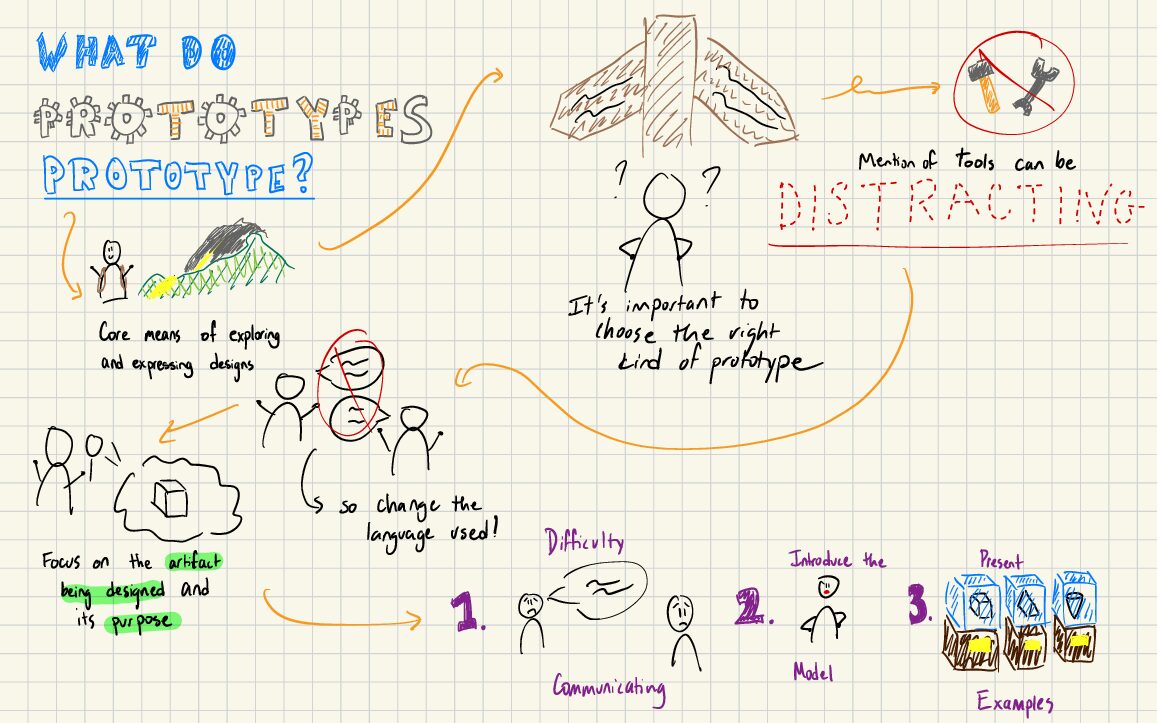I thought it was appropriate to share one of my sketchnotes I did for another class on this reading!
WHAT DO PROTOTYPES PROTOTYPE_
How can we incentivize players to follow the rules and procedures of our game?
- Purpose: We need to be able to motivate our players to buy into the “magic circle” we have drawn for them. Without an incentive and clear win condition, players may feel frustrated or bored after playing the game for a couple of rounds.
- Type of Prototype: Introducing a point system or consequences to not being the winner may help push players to try and be the winner of the debates in our game.
- Intuition: Players will need to heavily buy into the magic circle or introduce their own consequences that fit the context of their social dynamics to drive further incentivization.
What type of topics will players be willing to debate?
- Purpose: The topics of debate are essential to the mood and feel of the game. Different topics may introduce different types of fun, and depending on how the other players may react, may change how a player chooses to approach future debates.
- Type of Prototype: Come up with varying topics from completely separate, unrelated fields and introduce them into different playtests of the game.
- Intuition: The topics that people will be willing to debate are highly dependent on the social circle that they are playing with.
What does the game look like when different types of social groups play them together?
- Purpose: Answering this question will help us narrow our intended dynamic for this game. It will help us converge on specific ideas and introduce constraints to our future prototyping and playtesting that may help us answer more in-depth questions.
- Type of Prototype: Playtest with different kinds of social groups. Strangers, acquaintances, coworkers, and friend groups to name a few.
- Intuition: Closer social circles will be more willing to buy into the debates and approach topics with more nuanced takes while weaker social groups will take safer, generalized approaches to topics. This means the game can look drastically different depending on what type of groups play.
What happens when a player gets a character they have no information or context about?
- Purpose: There are many different characters from many different worlds and universes. Not everyone will know about characters that we assume to be well-known. Answering this question will help us solve this key issue in our game.
- Type of Prototype: Play two rounds: one with character context of real characters (i.e Spongebob is a goofy sponge who lives in an underwater town named Bikini bottom and is a fry cook) and a round with made-up characters that have no context. See how the players navigate each round.
- Intuition: Players will feel both helped and constrained by the character context. Context may help form a cursory image of a character but may also limit the player to fitting the character in the image they built for them.




